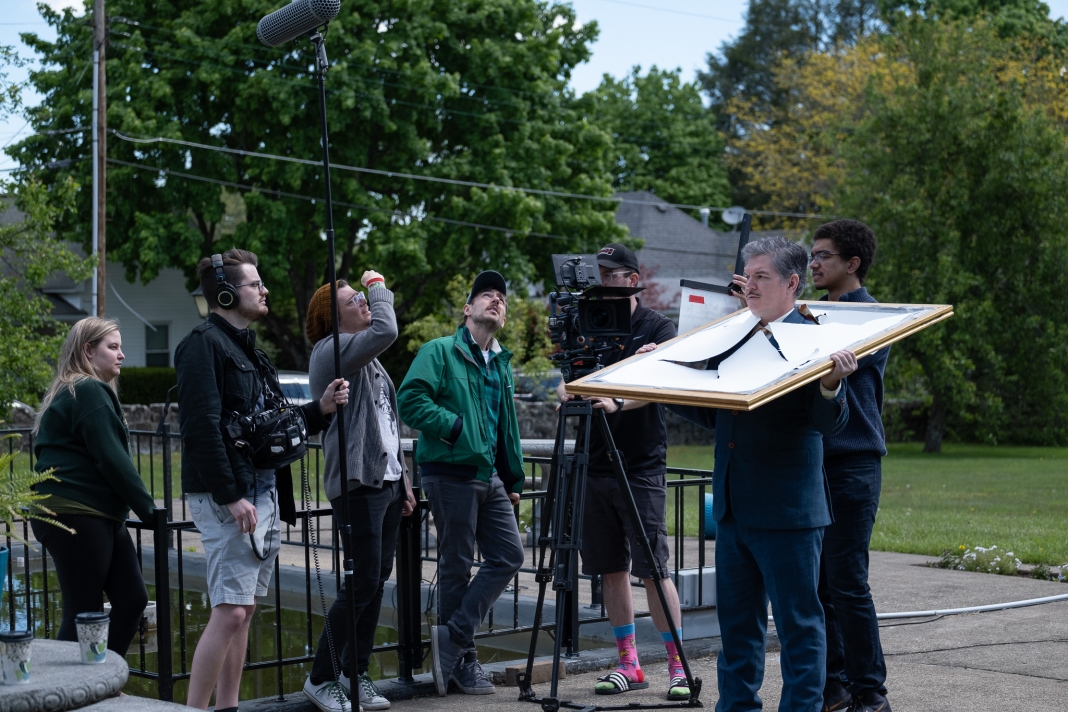BLUEFIELD, W.Va. — At the corner of Logan and Wayne streets on the north side of town sit two nondescript buildings, one brick and one concrete. They are not much to look at. Some might call them neighborhood eyesores.
But these two properties are linked to a fascinating story of perseverance and prosperity during the dark days of racial segregation. This overlooked history recently saw the corner listed on the National Register of Historic Places as the smallest historic district in West Virginia.
A thriving Black community existed in Bluefield throughout the 20th century, thanks to plentiful coal and railroad jobs and the perseverance of the Bluefield Colored Institute, now Bluefield State University.
At one time, Black residents comprised one-sixth of city’s population. However, segregationist practices forced them to operate separate businesses, churches, and other institutions. Some businesses advertised themselves to outside travelers by paying to be featured in the Negro Motorist Green Book.
The Green Book, as it was commonly known, was a travel guide that listed safe businesses for Black people to visit while on road trips. These included hotels, motels, tourist homes, restaurants, gas stations, beauty parlors, and nightclubs. The publication didn’t just provide convenience for its readers. In an era where Black people could face harassment, arrest, or even lynching for being in the wrong place, the book could be a lifesaver.
Thousands of people utilized the Green Book to travel through segregated communities safely and without incident. The guide was first published in 1936 by New York postal worker Victor Green. New editions were published annually until 1967, when the end of segregation eliminated the need for them.
Throughout the book’s years of publication, 140 businesses were listed in West Virginia. Most were found in its major urban centers, such as Huntington and Charleston, though some were located in more rural areas, such as McDowell County. The vast majority of these businesses have since been demolished. Today, fewer than 20 Green Book sites have been confirmed to still exist in the state. The plight of the locations makes it ever more critical to locate and preserve those that remain.
Visitors consulting the Green Book found several Black-operated businesses in Bluefield. These included The Hub restaurant, Kingslow’s Drug Store, and the Traveler’s Inn. This popular hotel, located on Raleigh Street behind the historic Granada Theater, opened in 1919 and was operated by a local Black Masonic organization. Its closure in the early 1950s created the need for new overnight accommodations for Black travelers.
In stepped Thelma Stone (1905-1981), perhaps Bluefield’s most prominent Black businesswoman. A college graduate and former restaurant owner, she was fiercely independent and devoted to helping the community. She briefly ran her first hotel, the Florence Hotel, on Wilson Street in the 1940s before deciding to build something better.
In 1949, she purchased an old house on Wayne Street in Bluefield’s Black residential neighborhood and established the Hotel Thelma. She added a large concrete block addition to the front of the house, creating hotel rooms on the second floor and a grocery store and restaurant on the ground level.
For more than a decade, the Hotel Thelma was a critical business and popular gathering place for Bluefield’s Black residents. It hosted a beloved, annual home-cooked Christmas dinner for the community. Various Black entertainers stayed here while on tour, unable to patronize the white-only hotels downtown. Among the guests were a young Ike and Tina Turner, who always stayed in Room 22.
Next door is another Green Book site, the Traveler’s Inn Hotel. It was named after the previous Traveler’s Inn on Raleigh Street. A small brick commercial building, it was constructed around 1920. It served various roles over the years, including as a store, apartments, and a WPA-funded daycare during the Great Depression.
Another Black businesswoman, Alma Florence, purchased the building in the 1950s and operated it as a small hotel and restaurant. She was the wife of Charles Florence, the former manager of the first Traveler’s Inn.

Because of their shared history and proximity, the Hotel Thelma and Traveler’s Inn Hotel were nominated to the National Register of Historic Places together as a single entity styled the Bluefield Green Book Historic District.
Containing just two buildings and spanning less than half an acre (0.476 acres to be exact), it is the smallest historic district ever nominated to the National Register in West Virginia. It may also be one of the smallest historic districts in the United States, although confirming this is difficult.
Both hotels have been closed for decades and continue to deteriorate. In recent years, however, the Bluefield community has turned its attention back to these important local icons.
A new nonprofit organization, the Hotel Thelma Project, hopes to rehabilitate the Hotel Thelma and make it a neighborhood asset once again. Ideas for the building's reuse include new apartments, a restaurant, community space, or museum exhibits. The owner of the Traveler’s Inn Hotel hopes to pursue similar rehabilitation work as well.
Thanks to their new National Register designation, both properties are eligible for grant funding and tax credit opportunities on the state and federal levels.
Find out more about the Bluefield Greenbook Historic District here. The district is at Google coordinate 37.27363266888769, -81.21632025587323.
Sign up to receive a FREE copy of West Virginia Explorer Magazine in your email twice weekly. Sign me up!





